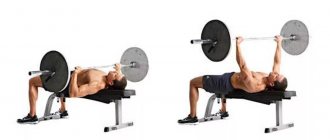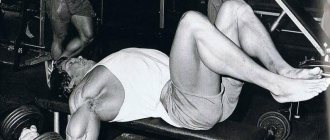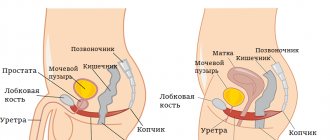The pectoral muscles are one of the largest and most complex muscle groups in the body. That is why, for proper chest training, it is important to use not only basic, but also isolating exercises that load the muscles from different angles.
In addition, to pump up the pectoral muscles, constant progress in working weights is necessary, since the chest responds well to hypertrophy - and this, in turn, requires perfect adherence to the exercise technique. How often should you pump your breasts?
Pectoral muscle training for mass
If you have recently started bodybuilding (less than a year), then it is best to use basic exercises, since thanks to them you will progress faster and gain muscle mass in your chest. And when your pecs are more or less developed, then you can add isolated exercises (no more than two).
What grip should you use when training your pectoral muscles?
For safety, it is best to use a “closed” grip, where the thumb wraps around the bar (under the letter B in the picture). This way you will insure yourself against the fact that the barbell may simply slip out of your hands (your palms will sweat and the barbell will “move”). In addition, do not grab the bar with too wide a grip, as this will create additional stress on the shoulder joints, which is not good. The best option is a grip slightly wider than shoulder width. When you lie down under the bar, make sure the bar is at eye level. This is the correct position.
Correct technique
If you are doing pressing movements, make sure that your elbows do not diverge to the sides and are not pressed to the body. The correct position of the elbows is approximately 45 degrees relative to the body. At the bottom, your forearms should be perpendicular to the floor.
If you do flyes, make sure that your arms are slightly bent at the elbow joint throughout the exercise.
Do not lift your lower back off the bench and rest your feet on the floor.
Insurance
In all pressing exercises, it is better to use the help of a partner or ask someone from the gym to back you up. This way you can better concentrate on the exercise and not think that if you can’t squeeze the barbell again now, it will crush you.
Also, be sure to put locks on the barbell so that if the barbell becomes skewed, all the weights won’t fall off.
// How many times a week should you exercise?
In practical terms, the difference between whether you train 2, 3, 4 or 5 times a week will be in the ability to create a training program. More precisely, planning for pumping large and small muscle groups - and ensuring sufficient time for their recovery.
In theory, the greatest results will be achieved by 5-6 daily 30-45 minute strength training sessions per week (this is how professionals most often train). In this case, the program should be designed so that the muscles worked the previous day have at least 48 hours to rest.
But in practice, only mesomorphs and professional athletes can exercise every day - whereas in real life, ordinary people find time to go to the gym a maximum of 3-4 times a week. Below we will look at examples of how to write a program in each of these cases.











